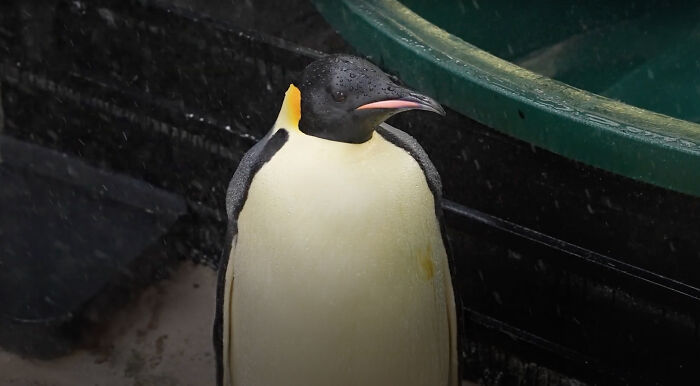Emperor penguins, known as the heaviest and tallest of all penguins, in wild nature can only be found in Antarctica where they are used to dealing with an incredibly harsh environment, with windchills reaching -76°F. Therefore, people in Australia couldn’t believe their eyes when one such penguin was recently found on the beach more than 2,000 miles from its icy home.
Surfer Aaron Fowler was among the first lucky ones to spot the penguin nicknamed Gus.
More info: WQAD News 8
The emperor penguin, the first of his species to be found in Australia, appeared to be malnourished, more than 2,000 miles away from his icy Antarctic home


According to the Western Australia state’s Department of Biodiversity, Conservation and Attractions, the penguin was found on November 1st on a well-known tourist beach in the town of Denmark in southwestern Australia.
“The penguin appeared to be malnourished and was removed from the beach to avoid potential threats,” a statement said.
While no one really knows why the penguin had ventured so far away from his home off the Antarctic coast, this is the first time that an emperor, the largest penguin species, has been known to have reached the Australian coastline.
“Never in my wildest thoughts would I have thought I’d ever have an emperor penguin to care for,” shared Carol Biddulph, who’s a registered wildlife rescuer and who brought Gus back to her facility for care. “It’s just amazing. It’s such a privilege to be part of this bird’s journey,” she added.
Dr Belinda Cannell, a research fellow at UWA’s School of Biological Sciences also mentioned that it is really uncommon to see emperor penguins so far from Antarctica.
“Tracked non-breeding penguins have never been observed in open water where there is no pack-ice, and never north of 60 degrees South,” she explained.


Surfer Aaron Fowler was in shock when he first spotted the penguin. In the beginning, the man thought it was just another seabird, but then Gus kept coming closer to the shore and it was clear he was way too big.
“This penguin was just like straight out of a documentary, it was perfect and was making all the penguin noises,” Aaron recalled of the remarkable moment.
“It was kind of funny, like as he came out of the water he went to do a tummy slide, like I guess he’s used to on the ice, and he just did a kind of faceplant in the sand and shook all the sand off and looked a bit shocked. It wasn’t until we got home and we googled it that we realised this never happens,” he added.
The penguin appeared to be in a good mood despite his incredibly long journey and wasn’t too afraid of humans. Aaron thinks that maybe Gus thought they were just other penguins because of their wet suits.
“He was not afraid of us at all,” the man said. “We were there for about 10 minutes and it was pretty cool. He was just chilling there and he kind of went up to the dunes a bit,” he added.
At the moment, the malnourished emperor penguin is still under careful care while the Department of Biodiversity, Conservation and Attractions officials are still considering whether they should take Gus back to his home continent.
The male penguin, nicknamed Gus, was found on a popular tourist beach in the town of Denmark in southwestern Australia




While researchers are still trying to figure out how and why Gus ended up on one of the Australian beaches, people are remembering the story of the 10-month-old penguin called Happy Feet who became an international celebrity in 2011 as the first emperor penguin spotted in New Zealand in 44 years.
The reasons for such long and unusual trips remain mystical, yet for sure this was a once-in-a-lifetime experience, not only for those who got a chance to see Gus on the beach in person that day but for the penguin himself as well. It’s not every day you can exchange Antarctica’s harsh weather for a dreamy, sunny beach!
People were overwhelmed by Gus’ story and mentioned that this spectacular journey could make a great movie one day



















